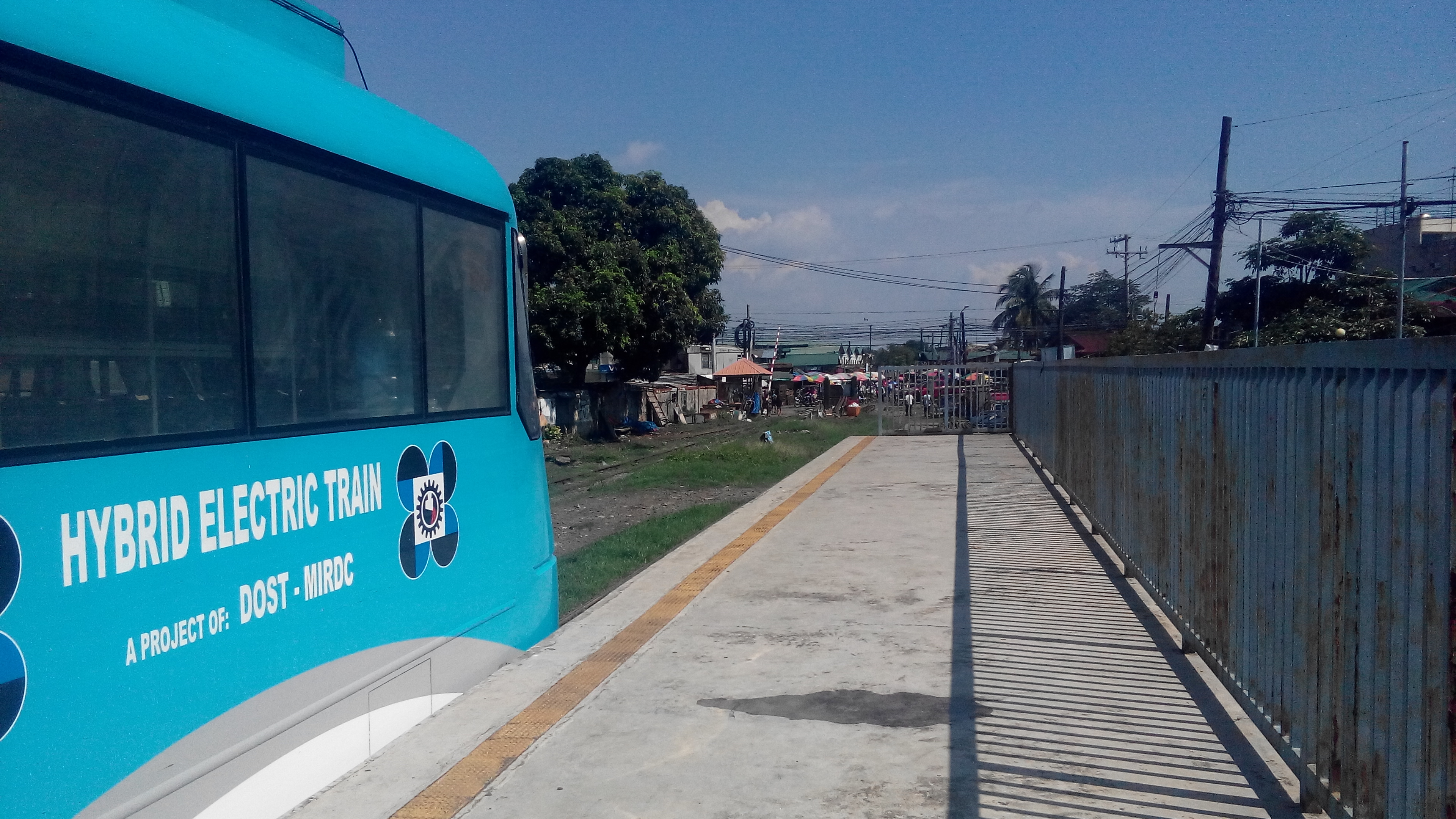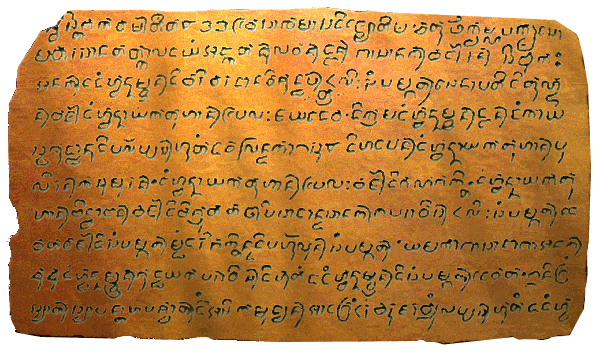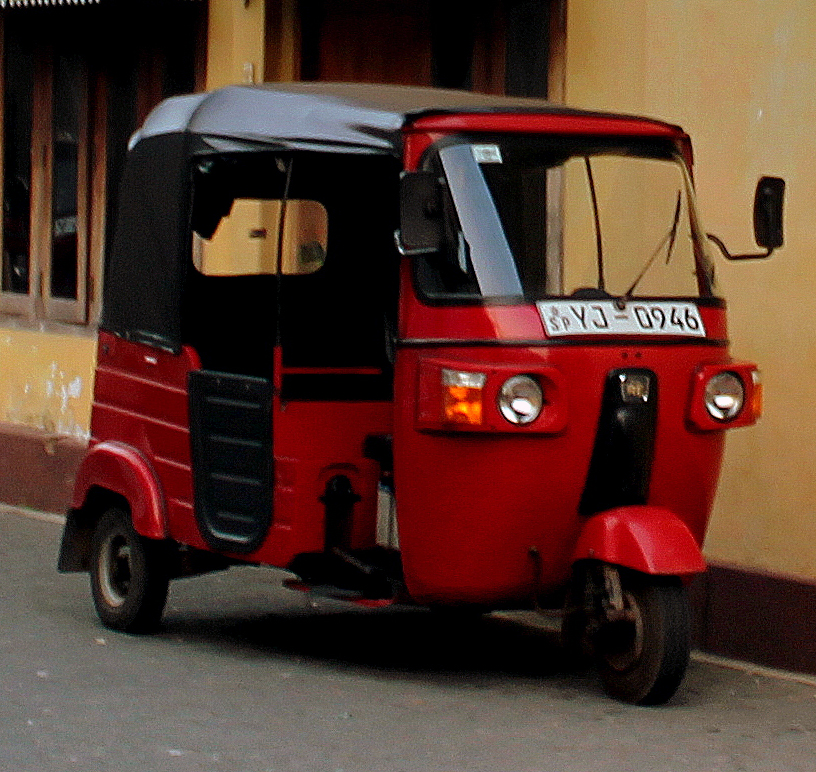|
Cabuyao Station
Cabuyao station is a railway station located on the South Main Line in Laguna, Philippines. History Cabuyao station was opened on 7 November 1908 on the South Main Line. Cabuyao station is part of the Alabang– Calamba segment that was closed starting in 2023 to prepare for the construction of the Clark–Calamba Railway. As of 2024, the rail tracks were dismantled while the station is kept intact. Nearby landmarks Cabuyao station is located at the city center of Cabuyao. Major landmarks nearby include the city public market, the city public schools, St. Polycarp Parish, Savemore Market, and Asian Institute of Technology, Sciences and the Arts. Transportation links Cabuyao station is primarily accessed by foot and served by tricycles. Jeepneys ply on the poblacion's main street a few hundred meters away, connecting commuters to other towns in Laguna from Calamba, Biñan Biñan (), officially the City of Biñan (), is a component city in the province of Laguna, ... [...More Info...] [...Related Items...] OR: [Wikipedia] [Google] [Baidu] |
Poblacion I, Cabuyao
Cabuyao (), officially the City of Cabuyao (), is a component city in the province of Laguna, Philippines. According to the 2020 census, it has a population of 355,330 people. It used to be known as the "richest municipality in the Philippines" because of the large populace of migrants working in the town's industrial estates. Nestlé Philippines, Asia Brewery, Inc., San Miguel Corporation, Tanduay Distillers, Inc., Wyeth Philippines, Inc., Procter & Gamble Philippines, Light Industry and Science Park of the Philippines and Mapúa Malayan Colleges Laguna have established factories or are located in Cabuyao. By virtue of Republic Act No. 10163, the municipality of Cabuyao was converted to a component city after the ratification of a plebiscite held on August 4, 2012. Etymology Cabuyao was once the central part of Tabuco, a large territory that once included the modern-day cities of San Pedro, Biñan, Santa Rosa and Calamba. The name "Cabuyao" came from the ''kabuyaw' ... [...More Info...] [...Related Items...] OR: [Wikipedia] [Google] [Baidu] |
Calamba Station
Calamba station is a railway station located on the South Main Line in Laguna, Philippines. It is one of two railway stations in the city and it is a major station on the line, serving as the junction between the South Main Line and the old Calamba–Batangas branch line which used to connect to Batangas City. It is also envisioned to be the terminus of the ''Commuter Express'' when rehabilitation work is complete. The station was first opened on January 24, 1909. The existing PNR line from Calamba to Legazpi is conventional ballasted track, where parallel steel rails are laid upon sleepers embedded in ballast (except on open deck bridges). Embankment is either on fill or at grade. Rails weigh 37 kg/m and are laid on sleepers of both wood and concrete. From Calamba to Legazpi, most stations and flag stops have been used for non-railway purposes such as residences, storage areas or as public gathering areas. Most of these stations south of Calamba are in conditions insufficient ... [...More Info...] [...Related Items...] OR: [Wikipedia] [Google] [Baidu] |
Philippine National Railways Stations
The Philippines, officially the Republic of the Philippines, is an archipelagic country in Southeast Asia. Located in the western Pacific Ocean, it consists of 7,641 islands, with a total area of roughly 300,000 square kilometers, which are broadly categorized in three main geographical divisions from north to south: Luzon, Visayas, and Mindanao. With a population of over 110 million, it is the world's twelfth-most-populous country. The Philippines is bounded by the South China Sea to the west, the Philippine Sea to the east, and the Celebes Sea to the south. It shares maritime borders with Taiwan to the north, Japan to the northeast, Palau to the east and southeast, Indonesia to the south, Malaysia to the southwest, Vietnam to the west, and China to the northwest. It has diverse ethnicities and a rich culture. Manila is the country's capital, and its most populated city is Quezon City. Both are within Metro Manila. Negritos, the archipelago's earliest inhabitants, ... [...More Info...] [...Related Items...] OR: [Wikipedia] [Google] [Baidu] |
San Pedro, Laguna
San Pedro, officially the City of San Pedro (), is a component city in the province of Laguna, Philippines. According to the 2020 census, it has a population of 326,001 people. It is named after its patron saint, Saint Peter. San Pedro has been dubbed as “ dormitory town” of Metro Manila and migrants from other provinces commuting everyday through its highly efficient road and transport system. Despite being one of the smallest political units in the entire province, with a total land area of only , San Pedro is the 5th most populous city (out of 6) after the cities of Calamba, Santa Rosa, Biñan and Cabuyao. The city also has the highest population density in the province of Laguna and in the whole Calabarzon region, having . As a municipality, it became a component city of Laguna by virtue of Republic Act No. 10420 dated March 27, 2013. Etymology The name of San Pedro originates from its old name: San Pedro eTunasán. The first part of the name comes from Spanis ... [...More Info...] [...Related Items...] OR: [Wikipedia] [Google] [Baidu] |
Biñan
Biñan (), officially the City of Biñan (), is a component city in the province of Laguna, Philippines. According to the 2020 census, it has a population of 407,437, making it the third largest in population in the province of Laguna, after Calamba and Santa Rosa. Biñan has become both a suburban residential community of Metro Manila and a location for some of the Philippines' largest industrial estates and export processing zones. Prior to its cityhood in 2010, Biñan was the richest municipality in the Philippines with an annual gross income of () and net income of ₱250 million (US$5.308 million), as of 2007 by the Commission on Audit. By virtue of Republic Act No. 10658, signed on March 27, 2015, by President Benigno Aquino III, Biñan has been separated from the first congressional district of Laguna and formed the lone congressional district of Biñan. Etymology Where Biñan got its name is a mystery. Some deduced that before Captain Juan de Salcedo procee ... [...More Info...] [...Related Items...] OR: [Wikipedia] [Google] [Baidu] |
Calamba, Laguna
Calamba, officially the City of Calamba (), is a Cities of the Philippines#Legal classification, component city in the Provinces of the Philippines, province of Laguna (province), Laguna, Philippines. According to the 2020 census, it has a population of 539,671 people making it the largest city in the province. Calamba is the regional center of the Calabarzon region. It is situated south of Manila and west of Santa Cruz, Laguna, Santa Cruz. The city is known as the "Spring Resort Capital of the Philippines" because of its numerous hot spring resorts, which are mostly located in Barangays Pansol, Bucal, Bagong Kalsada, and Lingga. According to the 2020 census, Calamba has a population of 539,671 people, making it the most populous local government unit in Laguna. It is the fifth-densest city in the province with more than 2,600 people per square kilometer after San Pedro, Laguna, San Pedro, Biñan, Cabuyao, and Santa Rosa, Laguna, Santa Rosa. Based on the overall rankings of t ... [...More Info...] [...Related Items...] OR: [Wikipedia] [Google] [Baidu] |
Auto Rickshaw
An auto rickshaw is a motorized version of the pulled rickshaw or cycle rickshaw. Most have three wheels and do not tilt. They are known by many other terms in various countries, including three-wheeler, Adaidaita Sahu, Keke-napep, Maruwa, auto, āta, baby taxi, bajaj, bao-bao, chand gari, CNG, easy bike, jonnybee, lapa, lapa-lapa, mototaxi, pigeon, pragya, tuk-tuk, tri-shaw, tukxi, tum-tum and tempo. The auto rickshaw is a common form of transport around the world, both as a vehicle for hire and for private use. They are especially common in countries with tropical or subtropical climates since they are usually not fully enclosed, and they are found in many developing countries because they are relatively inexpensive to own and operate. There are many different auto rickshaw designs. The most common type is characterized by a sheet-metal body or open frame resting on three wheels; a canvas roof with drop-down side curtains; a small cabin at the front for the driver operating ... [...More Info...] [...Related Items...] OR: [Wikipedia] [Google] [Baidu] |
Poblacion
''Poblacion'' (from Spanish '' población'', meaning "population"), sometimes abbreviated as Pob., is a term used in the Philippines to refer to the administrative center, downtown, old town, or commercial area of a city or municipality. It may consist of a single barangay or multiple barangays. Colloquially, the ''poblacion'' area is also referred to as the ''bayan'' (see also other definitions of '' bayan'') or ''plaza''. History During the Spanish rule, the colonial government founded hundreds of towns and villages across the archipelago modeled on towns and villages in Spain. The authorities often adopted a policy of Reducción, for the resettlement of inhabitants in far-flung scattered barangays to move into a centralized ''cabecera'' (town/district capital) where a newly built church and an '' ayuntamiento'' (town hall) were situated. This allowed the government to defend, control and Christianize the indigenous population, to conduct population counts, and to co ... [...More Info...] [...Related Items...] OR: [Wikipedia] [Google] [Baidu] |
Philippine Star
''The Philippine Star'' (self-styled ''The Philippine STAR'') is an English-language newspaper in the Philippines and the flagship brand of the Philstar Media Group. First published on July 28, 1986, by veteran journalists Betty Go-Belmonte, Max Soliven and Art Borjal, it is one of several Philippine newspapers founded after the 1986 People Power Revolution. Its sister publications include business newspaper '' BusinessWorld''; Cebu-based, English-language broadsheet '' The Freeman''; Filipino-language tabloids '' Pilipino Star Ngayon'' and ''Pang-Masa''; Cebuano-language tabloid ''Banat'', online news portals Philstar.com, PhilstarLife.com, Interaksyon (formerly with News5), LatestChika.com, Wheels.PH, PropertyReport.PH, Multiverse.PH and TV/digital production unit Philstar TV. In March 2014, the newspaper was acquired by MediaQuest Holdings, Inc., a media conglomerate subsidized by the PLDT Beneficial Trust Fund, after the company purchased a majority stake in Philsta ... [...More Info...] [...Related Items...] OR: [Wikipedia] [Google] [Baidu] |
Alabang Station
Alabang station is a railway station located on the PNR South Main Line in Muntinlupa, Metro Manila, Philippines. It is the sixteenth station southbound from Tutuban and is one of three Philippine National Railways (PNR) stations serving Muntinlupa, the two others being Sucat and Muntinlupa. The station is located on T. Molina Street in Alabang, Muntinlupa. Alabang station is the only PNR station to be completely rebuilt in a different location, having been moved from its original location at Montillano Street to the back of Starmall Alabang on T. Molina Street. The new station was opened on April 19, 2010. The other one is Dela Rosa station, which was moved a block south to accommodate the longer trains and mitigate traffic congestion at the grade crossing along Gil Puyat Avenue. On March 28, 2024, station operations were temporarily suspended to make way for the construction of the North–South Commuter Railway. The station will be repurposed as an elevated station. Th ... [...More Info...] [...Related Items...] OR: [Wikipedia] [Google] [Baidu] |
Cabuyao
Cabuyao (), officially the City of Cabuyao (), is a component city in the province of Laguna, Philippines. According to the 2020 census, it has a population of 355,330 people. It used to be known as the "richest municipality in the Philippines" because of the large populace of migrants working in the town's industrial estates. Nestlé Philippines, Asia Brewery, Inc., San Miguel Corporation, Tanduay Distillers, Inc., Wyeth Philippines, Inc., Procter & Gamble Philippines, Light Industry and Science Park of the Philippines and Mapúa Malayan Colleges Laguna have established factories or are located in Cabuyao. By virtue of Republic Act No. 10163, the municipality of Cabuyao was converted to a component city after the ratification of a plebiscite held on August 4, 2012. Etymology Cabuyao was once the central part of Tabuco, a large territory that once included the modern-day cities of San Pedro, Biñan, Santa Rosa and Calamba. The name "Cabuyao" came from the ''kabuya ... [...More Info...] [...Related Items...] OR: [Wikipedia] [Google] [Baidu] |
Philippine National Railways
The Philippine National Railways (PNR) (; ) is a government-owned and controlled corporation, state-owned railway company in the Philippines which operates one commuter rail service between Laguna (province), Laguna and Quezon, and local services between Sipocot, Camarines Sur, Sipocot, Naga, Camarines Sur, Naga and Legazpi, Albay, Legazpi in the Bicol Region. It is an attached agency of the Department of Transportation (Philippines), Department of Transportation. Philippine National Railways traces its roots to the Ferrocarril de Manila-Dagupan, founded on November 24, 1892 during the History of the Philippines (1521–1898), Spanish colonial period, and later becoming the Manila Railroad Company (MRR) during the History of the Philippines (1898–1946), American colonial period. Founded on June 20, 1964, by virtue of Republic Act No. 4156, the PNR used to operate over of route from La Union to the Bicol Region. However, neglect reduced the railway's service, and persistent p ... [...More Info...] [...Related Items...] OR: [Wikipedia] [Google] [Baidu] |






